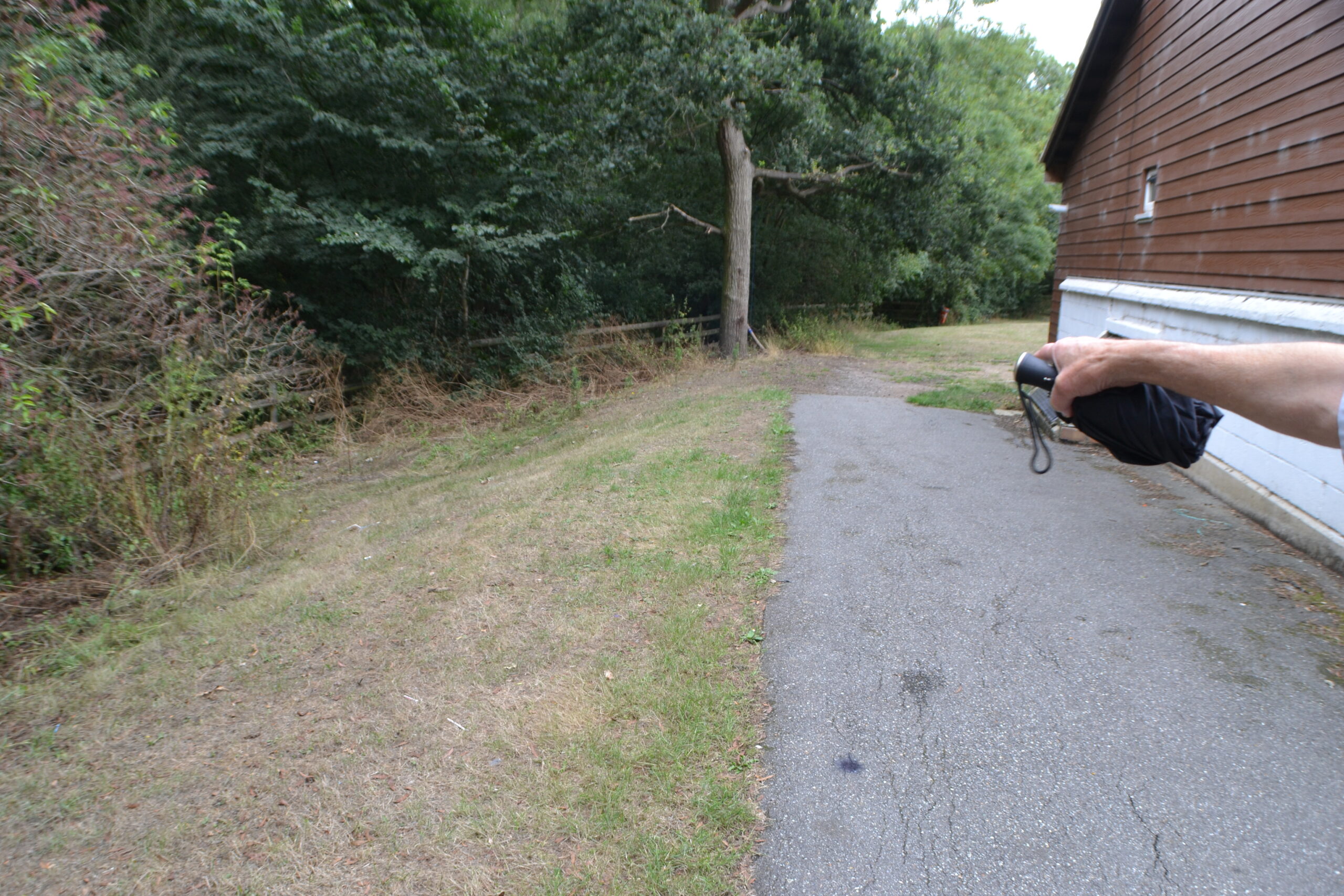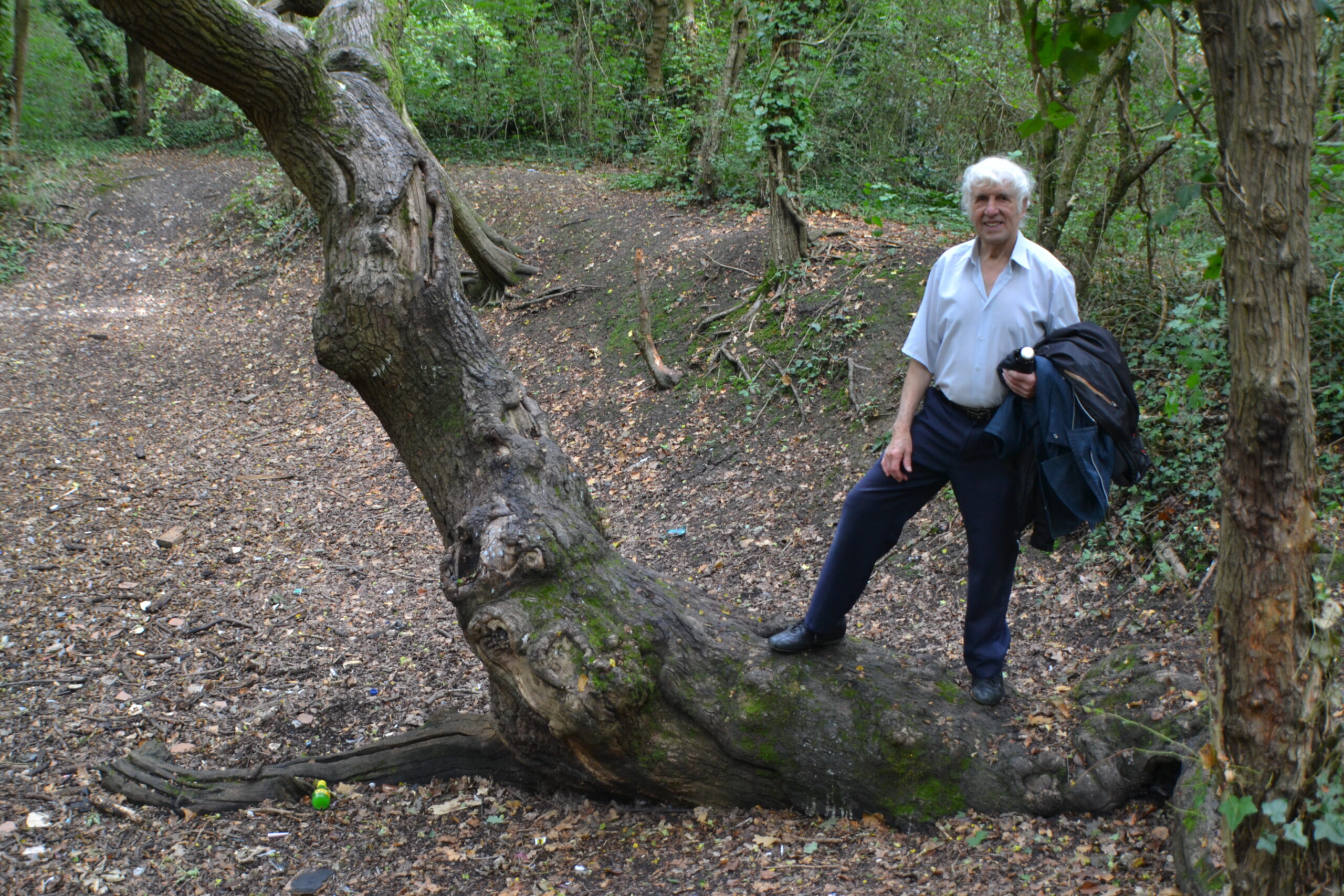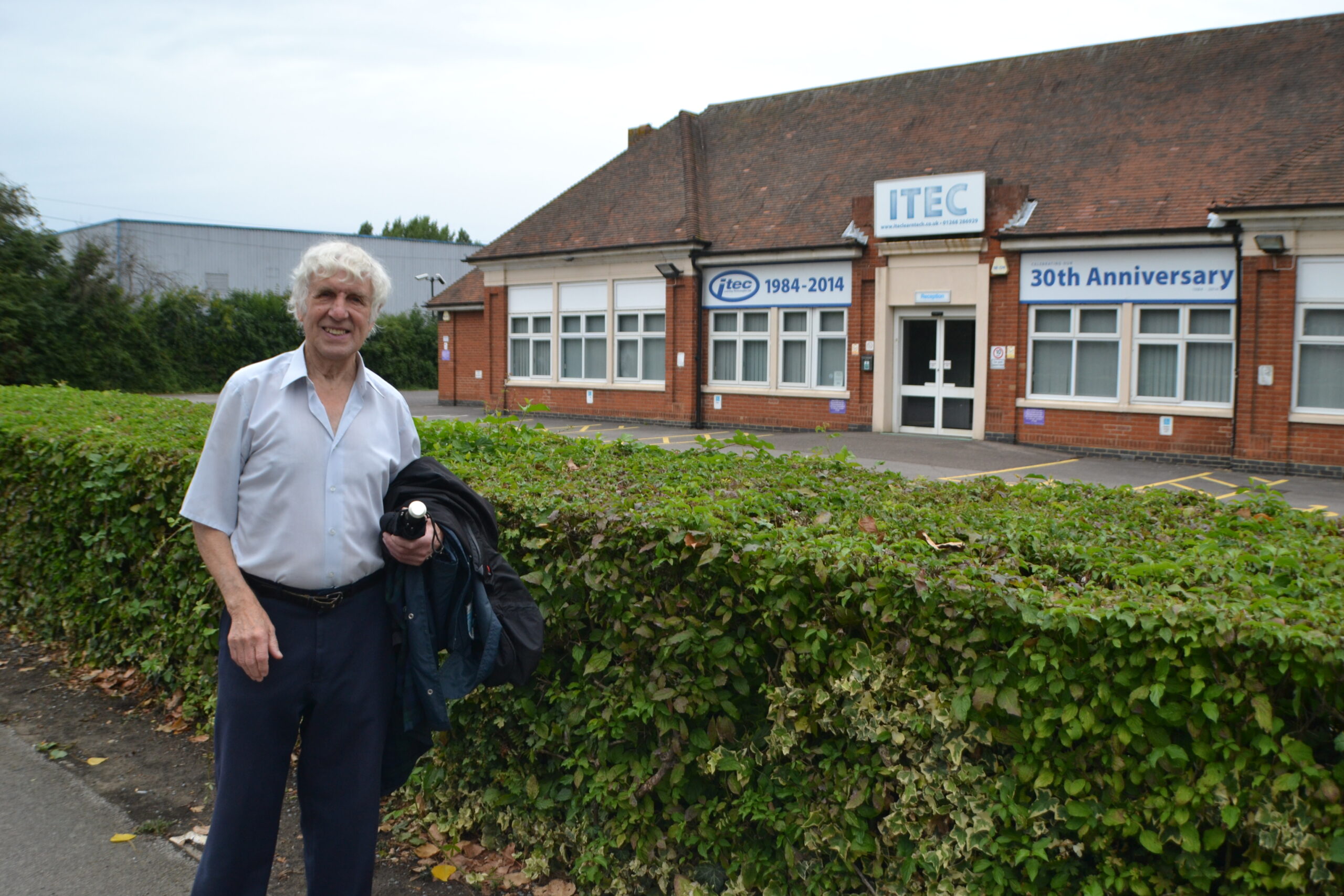In January 2012, Liam interviewed his grandfather Peter Basham, who lived in Nevendon during the 1930s, wartime and early post-war period. Nevendon is an area now consumed largely by the Burnt Mills Industrial Estate, but was once a standalone village on the outskirts of Basildon, Wickford and Pitsea. Peter was a young boy when the Second World War hit. This article investigates Peter’s youth; including the war and its effect on Nevendon, his pastimes shared by children growing up during war, and even National Service in the 1950s.
These photographs show Peter at various significant places to him as a boy during wartime; his old school, the site of a V2 rocket crash which he managed to accurately pinpoint from memory, and a tree and a pond he used to play at as a child. The V2 rocket mentioned in the memoir below crashed on the edge of where a field met Nevendon Bushes, and the field became Winstree when housing was built upon it post-war. The crash site was at the end of this road. The school and its pupils very narrowly and luckily missed the V2 by around 350m.

V2 crash site 

The old Nevendon school
Below is Peter’s memoir from 2012:
I was around seven years old in 1943, when I remember many occurrences. The first was when I remember the German air-raids flying across into London, and it was a frightening feeling. I also remember the ‘Doodle-Bug’ V1 flying bombs going over, and we heard the unforgettable noise of them coming by. I always feared hearing when the engine would cut out, meaning it was about to plummet and explode. The nearest bombs, from a German air-raid, were dropped about 100 metres away from our bungalow – it struck a gas main! My sisters and I were doing some crayoning in the front room, and the blast blew the crayons around the room, and all the lights went out, but luckily we were unscathed. That was the nearest we had to a fatality due to the war. The nearest V1 to our bungalow hit about a quarter-half a mile away, and we were about eight miles away from the Oil Refineries at Shell Haven, which were a German target from the air, meaning the area was under quite a threat.
When I was six years old, I had to go to Billericay hospital – the nearest one to us – to get my tonsils removed. Surrounding the hospital were many barrage-baloons, designed to catch-out German aircraft on their very thick metal wires.
On another occasion, a German fighter plane (a Messerschmitt) flew down Rectory Road (where I lived), very low, and we had chickens in our garden. It started machine-gunning the road, so we all hit the ground. I remember seeing all the chickens flying about and cackling, although no-one was injured., but it was a terrible fright to us all. We also used to stand in the garden, watching all the British Lancaster bombers heading over to Germany on a bombing attack. This became quite a common sight.
On the next instance, I was at Nevendon Primary School which was the school everyone went to in our small community. I remember vividly it was lunchtime -about midday – when there was a huge explosion when we were in class. Again, approximatley a quarter to half mile away, all the windows shook in the classroom. We saw a huge pall of smoke going up, and it was a V2 rocket bomb, which was undetectable by radar (that’s why there was no warning, as usually we’d hear the sirens going so we all went to our brick air-raid shelters), and was the last of Hitler’s terror weapons to be put into use. The V2 blew a massive crater in the corner of what was the edge of the field and Nevendon Wood (now called ‘Nevendon Bushes’), and split many of the trees. We also found a huge slab of the rocket itself, which stayed there for years. Later on, when I was a bit older, we used to fire our shotguns at it, but not a single pellet could penetrate it! I also saw a V2 rocket crossing the sky, which landed several miles away. It was incredibly fast and moved in an instant.
When we were going home from school, when an air-raid was expected, we found tons of strips of ‘chaff’ – a foil-like aluminum sheet-metal which was dropped by British planes to scramble the enemy’s radars. We used to collect it all up and take it home with us.
Later on, in the 1950s, I was called up to do 2 years national service in the Army – not many people left the areas where they lived at the time, and it was strange to find the different dialects from across the country. I remember my first training when I fired a Lee-Enfield .303 rifle which was so forceful that it came back and the bolt cut my lip.
In the 50s I began working at Shell Oil Refinery. In the marshes there were brick rectangular pits which were never put into use, although would have been used in the War to be filled with oil and set alight, to create the impression to the Germans flying above that the refinery had already been bombed, making them move on and bomb elsewhere.
So there we go, quite a detailed and eventful account, bringing home the terrors to everyone in England in the Second World War. Thanks to Peter Basham for this account, and I hope you find it interesting.
This entry was posted in Location Report


